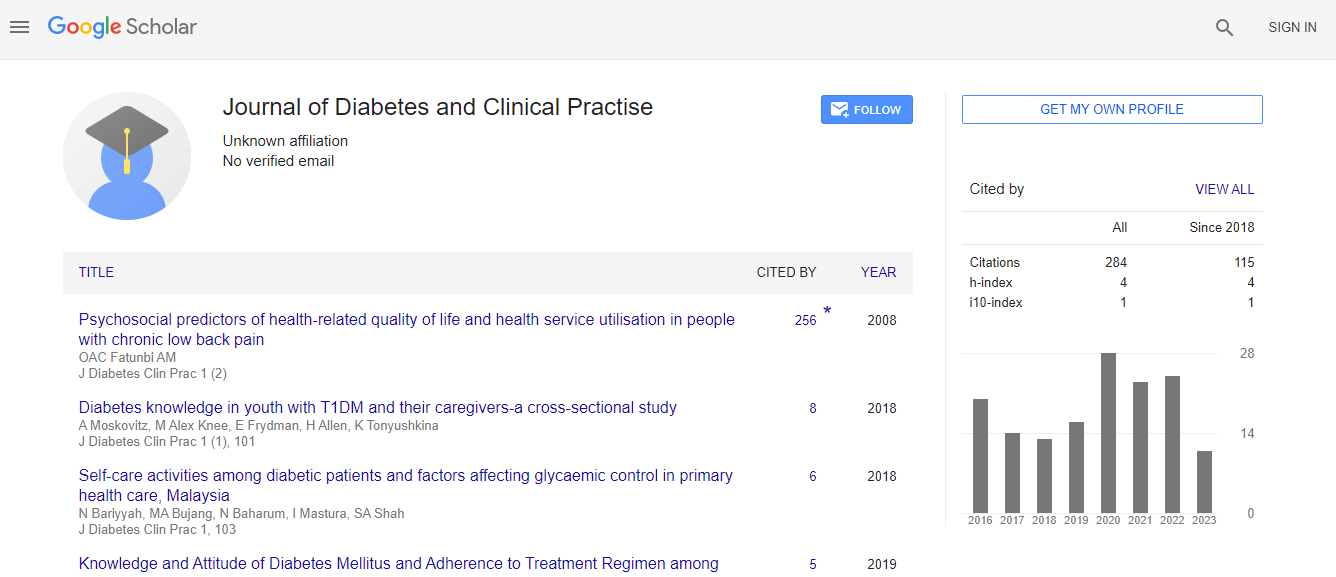Our Group organises 3000+ Global Conferenceseries Events every year across USA, Europe & Asia with support from 1000 more scientific Societies and Publishes 700+ Open Access Journals which contains over 50000 eminent personalities, reputed scientists as editorial board members.
Open Access Journals gaining more Readers and Citations
700 Journals and 15,000,000 Readers Each Journal is getting 25,000+ Readers
Google Scholar citation report
Citations : 284
Journal of Diabetes & Clinical Practice received 284 citations as per Google Scholar report
Journal of Diabetes & Clinical Practice peer review process verified at publons
Indexed In
- Google Scholar
- Publons
- ICMJE
Useful Links
Recommended Journals
Share This Page
Sampada Chande

Sampada Chande
Associate Professor
USA
Biography
I was a Senior Research Fellow in Environmental Genomics Division(EGD) at National Environmental Engineering Research Institute (NEERI), Nagpur, India . I completed my PhD in Biotechnology at the National Environmental Engineering Research Institute (NEERI) in Nagpur, India. My thesis included the study of redox mediated differential expression of housekeeping genes. My model organism is E.coli. I received my PhD from Nagpur University under the supervision of Dr. Hemant J. Purohit, Head, EGD in September, 2014 in the subject of Biotechnology.
Dr.Purohit’s division, a genomics lab, works towards understanding the genomics of ecological niches including waste water treatment plants and the gene regulatory network in the adapted organisms in terms of redox-mediated physiology (Puranik et al, 2012), gut microbiota and host-pathogen interactions in infectious diseases. My research area for PhD was redox-mediated differential expression in Escherichia coli. I have worked on some projects alongside involving epigenetics of autism and genome of Mycobacterium tuberculosis I started as a postdoc at Yale school of medicine with Dr.Clemens Bergwitz in 2015 where I am currently working.
Research Interest
Growth and energy balance in cell is maintained majorly through inorganic phosphate levels: these are tightly regulated to avoid excess or deficiency. In phosphate metabolism, bioactive protein FGF23 mediates urine phosphate excretion along with various factors including 1,25-dihydroxyvitamin D, phosphate, calcium, iron, leptin, acidosis, secreted klotho and PTH (Lanske and Razzaque, 2014). Including all the proteins involved in downstream signaling, the list is long. I am studying inborn errors of phosphate metabolism and the endocrine regulation of phosphate homeostasis with emphasis on the metabolic and homeostatic effects of phosphate

 Spanish
Spanish  Chinese
Chinese  Russian
Russian  German
German  French
French  Japanese
Japanese  Portuguese
Portuguese  Hindi
Hindi 
